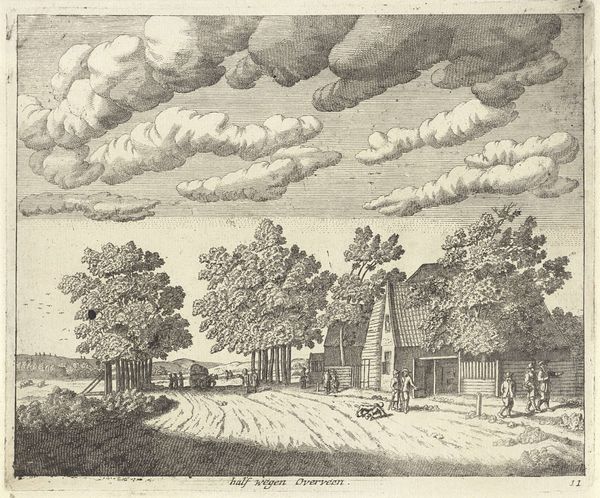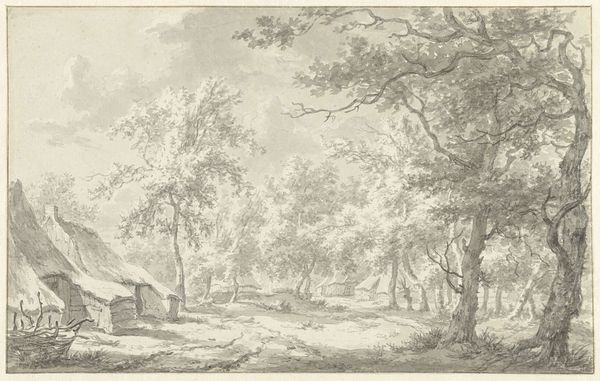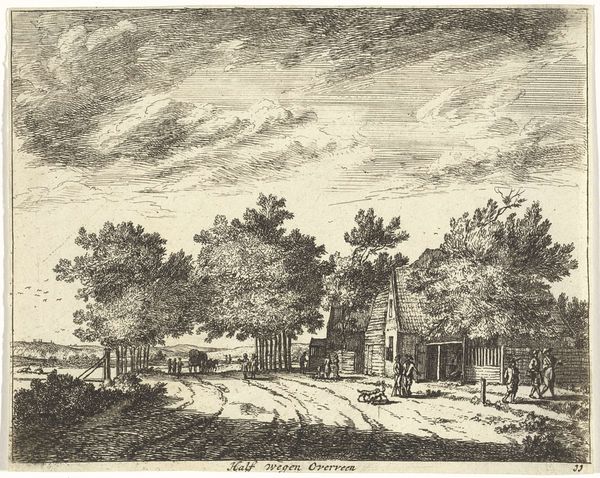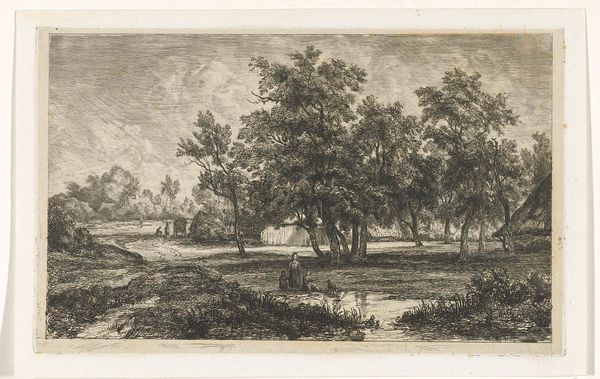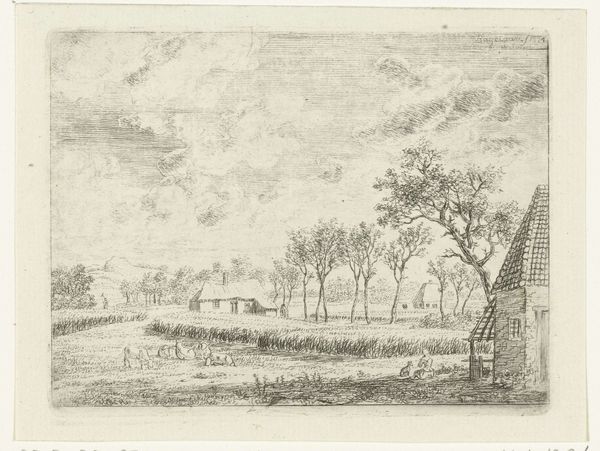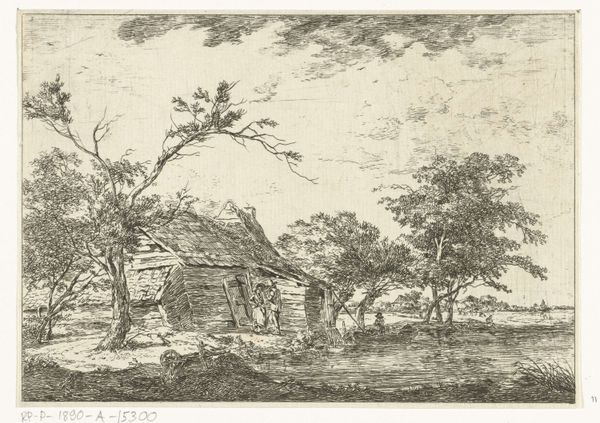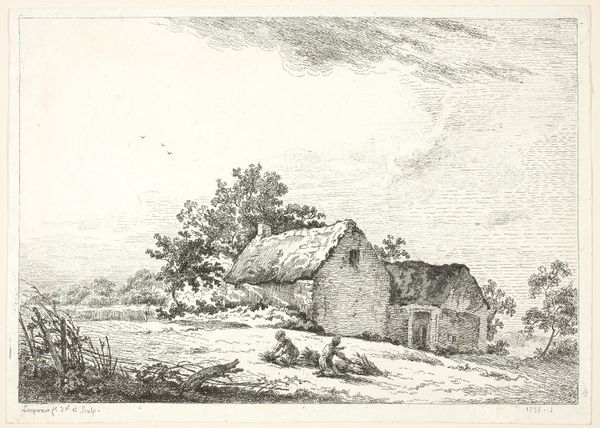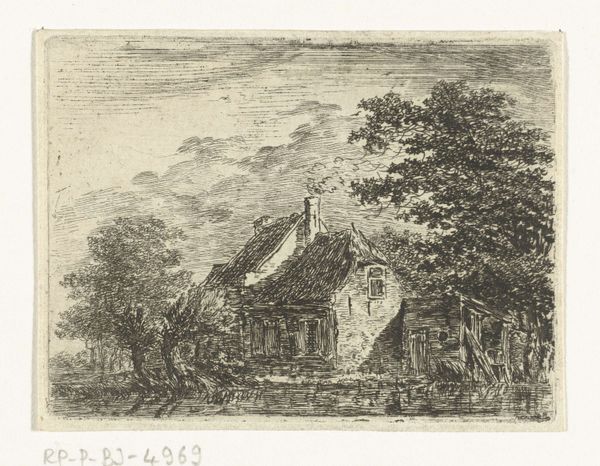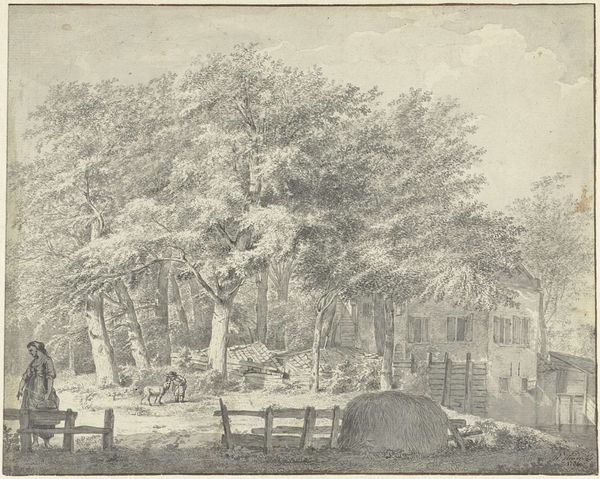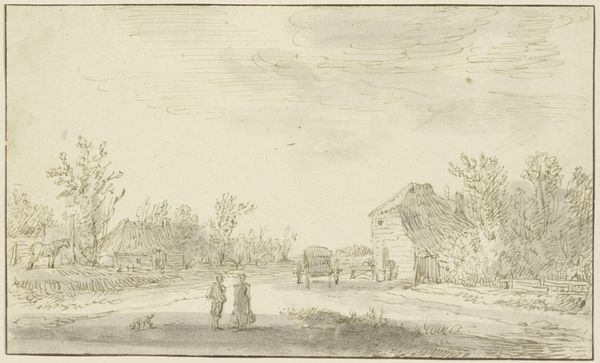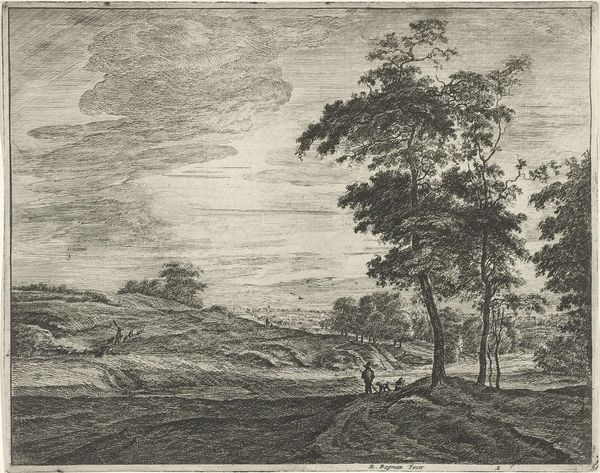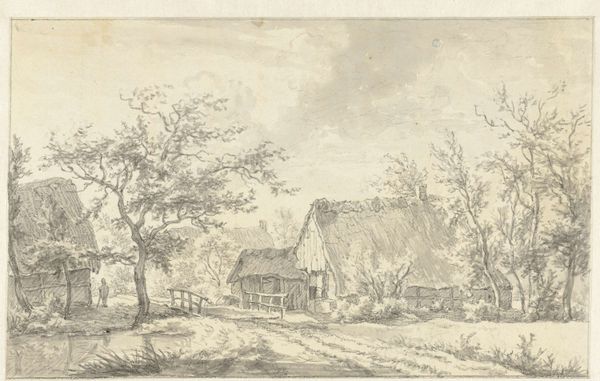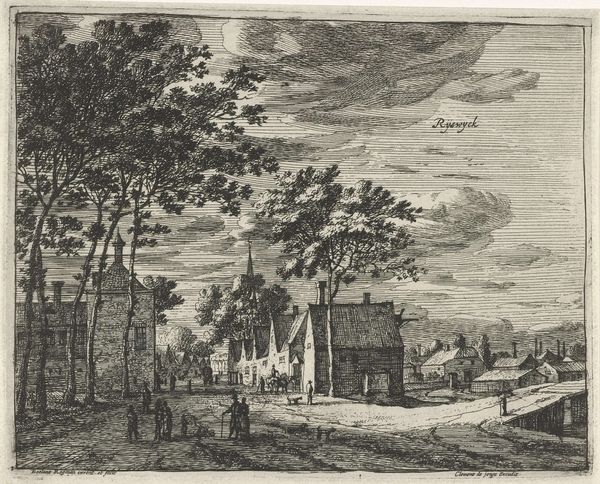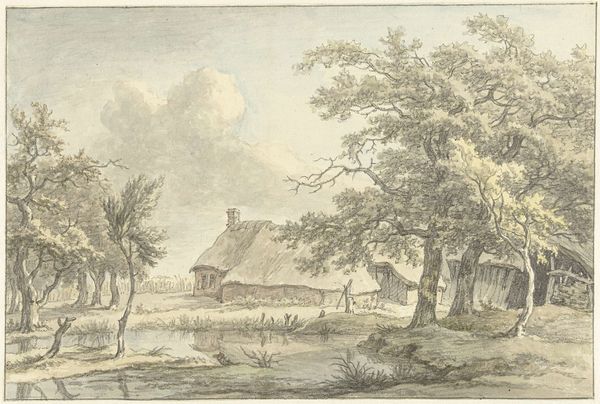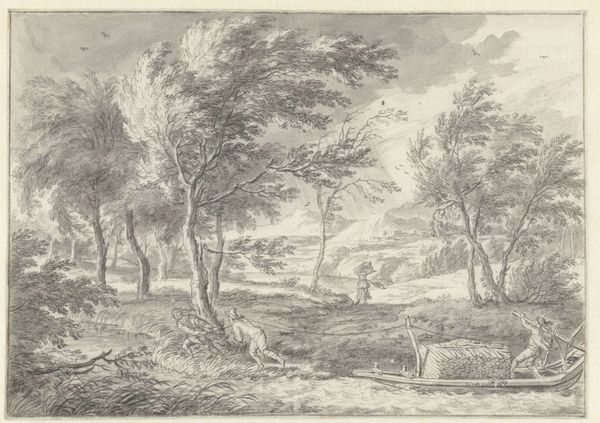
Dimensions: height 244 mm, width 373 mm
Copyright: Rijks Museum: Open Domain
Editor: So, this is Egbert van Drielst's "Landschap in Eext (Drenthe)," made sometime between 1755 and 1818. It’s a pencil and ink drawing on paper, very delicate. I’m immediately drawn to the dreamy quality – that faint rainbow-like arc. What do you see in this piece, what captures your imagination? Curator: It's funny you mention "dreamy," because that's exactly what hit me. There's a stillness, a quiet intimacy to this landscape. The muted tones enhance it, almost as if the artist were remembering a cherished memory. Van Drielst manages to conjure this very Dutch scene: the quaint cottage nestled among wind-swept trees... Have you ever felt like you're not just seeing, but almost *inhabiting* a landscape? Editor: Absolutely! It feels very personal, less like a documentary and more like a feeling captured on paper. Is that a feature of romanticism in landscape art? Curator: You’ve hit on something important. The Romantics sought to portray a heightened sense of emotion through the natural world. Notice how Van Drielst uses soft, almost ethereal lines to suggest the presence of light filtering through the scene. Editor: That subtle light definitely contributes to that dreamy quality. Curator: Indeed! The single figure, the little horse and rider near the cottage, almost vanishes into the landscape, highlighting nature's grand scope. So, does that resonate with you; this merging of personal feeling and grand nature? Editor: Definitely, I appreciate how much the small details contribute to a larger feeling. It feels much grander now, thinking about it as romantic instead of just pretty! Curator: I find the quiet detail so human; it suggests a sense of peace, as if Van Drielst found solace in nature. Always good to remember it.
Comments
No comments
Be the first to comment and join the conversation on the ultimate creative platform.
